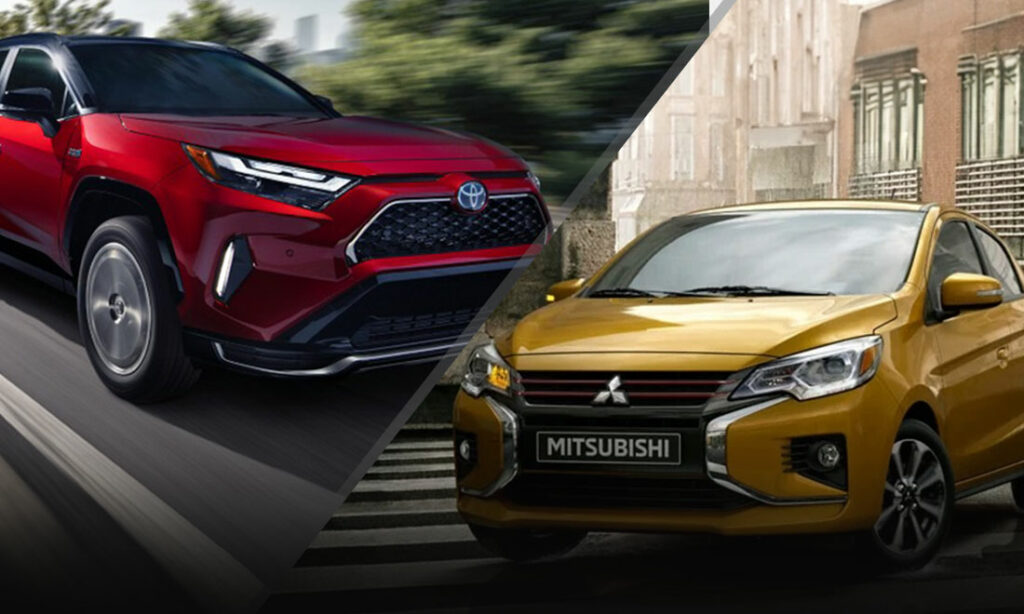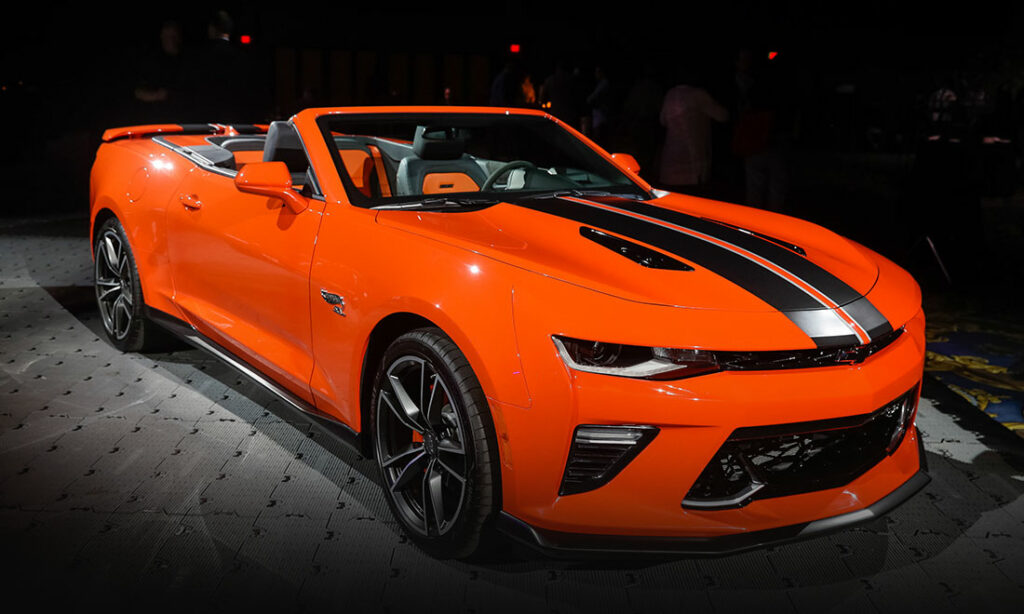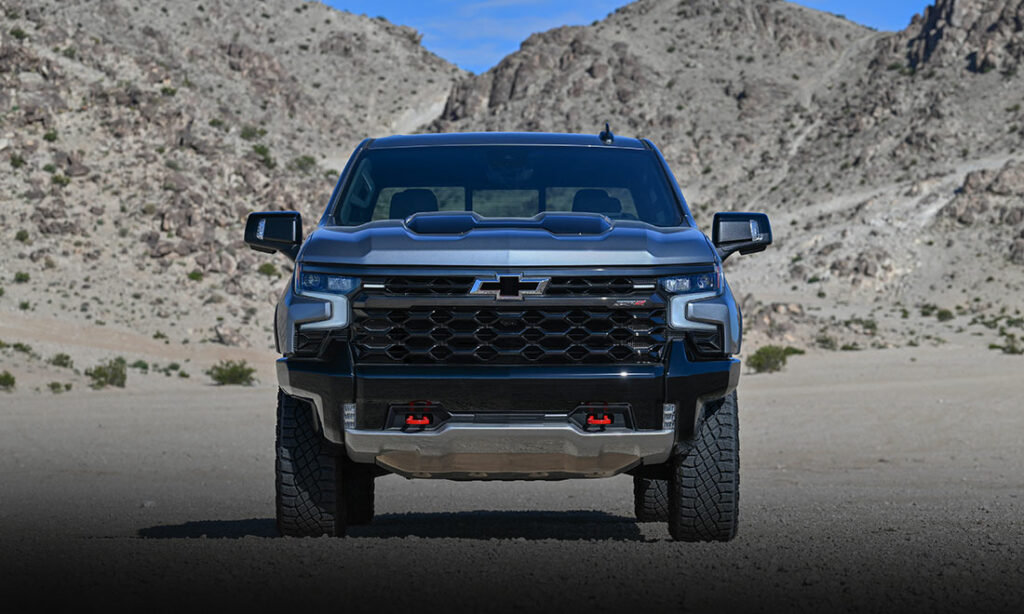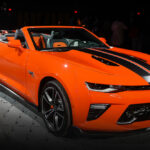Classic Comparison: Mercedes-Benz 190E vs BMW E30 M3
Light, fast, and fashionable, the Mercedes-Benz 190E and BMW E30 M3 vie for the title of Germany’s best ’80s touring car.
Germanic Maniacs
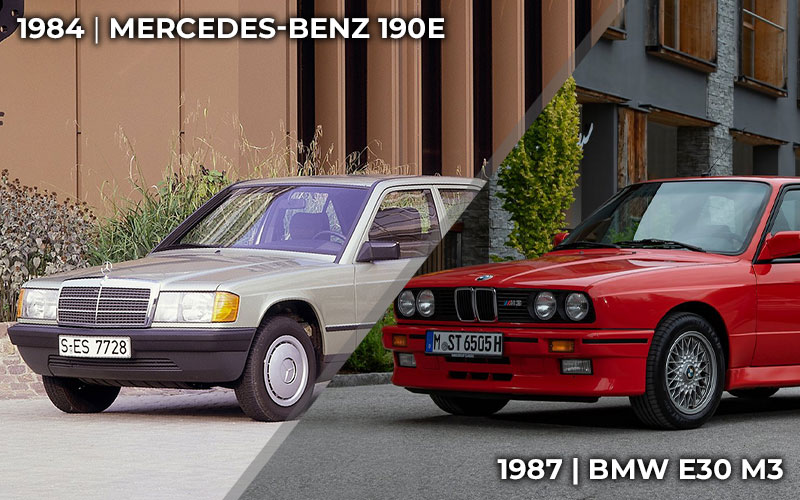
Detroit’s Big Three, Ford, Chrysler, and GM, have a long and storied history of intense rivalry with the three companies vying for sales supremacy and motor sports glory and each individual victory inspiring the others to greatness. The same dynamic has been playing out over in Germany for decades with the likes of Audi, Mercedes-Benz, Porsche, and BMW all trying out do one another in a perpetual game of one-upmanship. The crucible of competition is where greatness is forged (or so said my junior high football coach), and so, when Mercedes made a move into the compact car market and grand touring racing with their 190E, BMW’s response was to build one of their most iconic and successful models of all, the E30 M3.
This Classic Comparison pits two of the 1980s coolest and most beloved German sports cars, the Mercedes-Benz 190E 2.3-16V versus the BMW E30 M3.
Mercedes-Benz 190E 2.3-16V
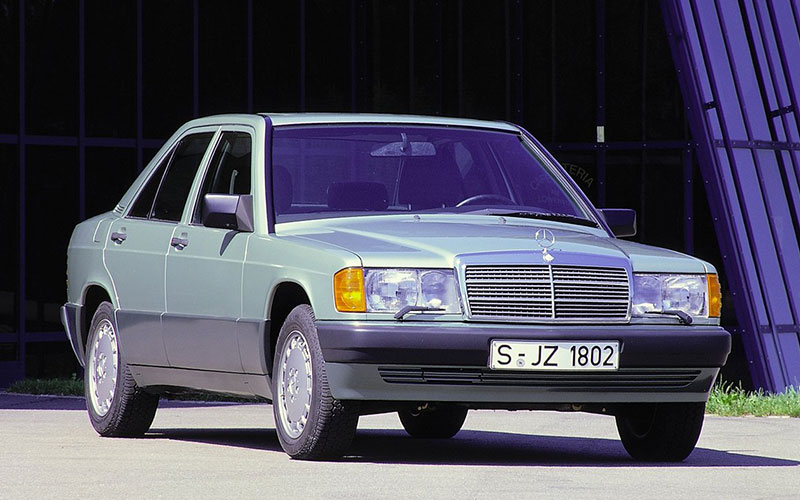
Starting back in 1974, Mercedes-Benz felt they needed a compact sedan to compete with BMW’s successful offerings in the segment. Automotive development being what it is, it wouldn’t be until 1982 that the new 190E debuted at the Paris Motor Show.
These were the heady days of Group B rally, and Mercedes-Benz saw the new 190E as the perfect platform and began preparations for homologation. Audi’s successes with the Quattro and its nimble four-wheel drive athletics clearly outclassed the rear-wheel drive based 190E. Seeking an alternative, Mercedes-Benz set their sights on Group A and DTM (Duetsche Tourenwagen Meisterschaft) touring classes as the next logical home for a competition 190E.
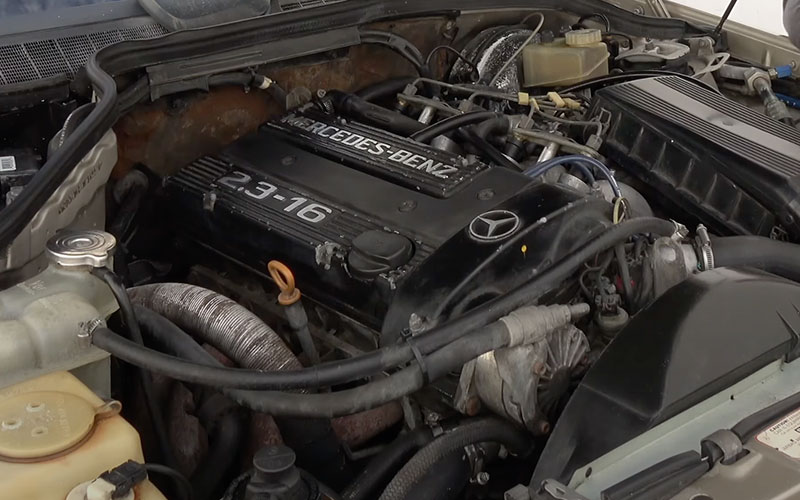
The British engineering company Cosworth was called in to build a competition engine for the 190E. They modified the 190E’s four-cylinder engine, most significantly swapping the 8-valve head for a 16-valve head. The new 190E 2.3-16V also got stronger pistons, an anti-slip differential, and extensive body work that included lowered bumpers, side skirts, a front spoiler, and rear wing. Inside were aggressively bolstered Recaro seats installed front and rear and three additional gauges in the center console: a stopwatch for track times, an oil temperature gauge, and an ammeter.
The new 190E 2.3-16V debuted at the Frankfurt Motor Show in 1983. The car made it over to US shores three years later in 1986. This version was toned down from the European version, with 167 horsepower compared to the Euro version’s 185 horsepower. That same year the 190E 2.3-16V made its DTW debut, winning two races that year.
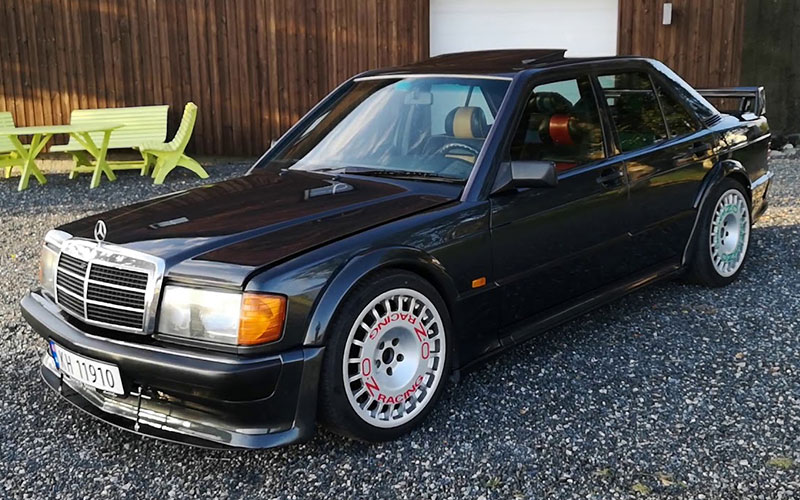
In 1988, the competition 190E got a new engine, a 2.5L version of the same engine, also by Cosworth. The new four-cylinder upped output to 195 horsepower. New colors were added alongside pearl black and smoke silver, an almandine red and an astral silver.
Several more racing variants were added over the next few years. In 1989, the new Evolution 1 arrived, a direct response to the then new BMW M3 Sport Evolution. The Evolution 1 featured a new 2.5L and new bodywork to match. Though the 2.5L was still a Cosworth creation, there was an AMG power pack option that added unique intake and exhausts among other modifications that summed up to an additional 30 horsepower (now up to 225 hp). The Evolution 2 followed the next year, tuned to 235 horsepower and with wider fenders and a big wing in back.
By this time, the 190E was coming into its own with the 1990 and 1991 racing seasons the most successful for the car.
BMW E30 M3
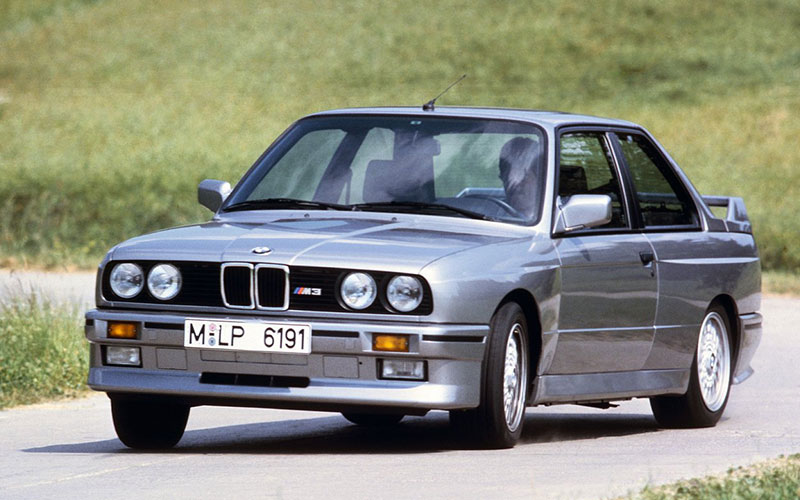
Like the Mercedes-Benz 190E 2.3-16V, the BMW E30 M3 was created as a homologation special aimed at FIA Group A and DTM touring car racing. The initial plan was to port over the six-cylinder from the M1, but the engine was too heavy for the lightweight 3 Series. The solution was to simply chop off two cylinders, thus creating a 2.3L DOHC inline-four. The 195-horsepower engine was then paired with a five-speed manual.
The E30 M3 debuted at the Frankfurt Motor Show in 1985. Again, like the racing version of the 190E, the E30 M3 distinguished itself from the regular 3 Series with a front splitter, side skirts, and a rear spoiler. These features accentuated the E30’s boxy ‘80s paneling to produce one of the most aesthetically definitive cars of the decade. The E30 M3 was offered primarily as a coupe, but from 1988 through 1991, it could be ordered as a convertible (sadly losing that sick rear spoiler in the process).
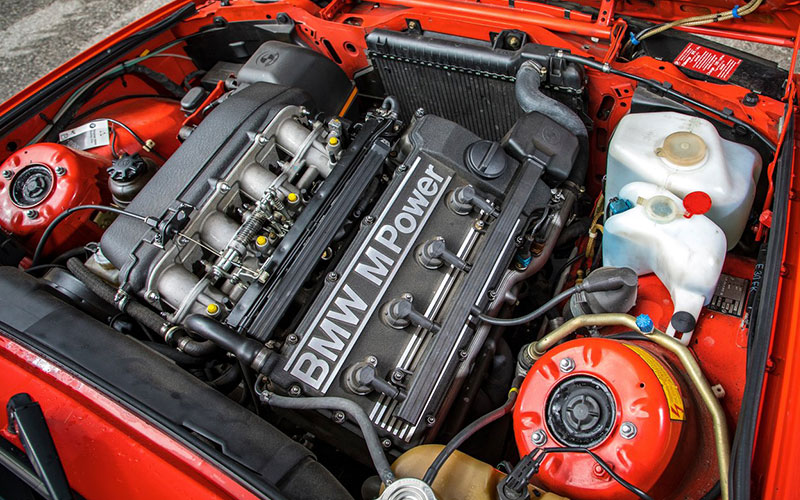
The Evolution (EVO1) variant debuted in 1987 with 212 horsepower and the EVO2 would kick that number up to 220 horsepower a year later. In 1989, a new Sport Evolution, the inspiration for the 190E’s evolution, arrived with a 2.5L engine and was followed by the Sport Evolution 2 in 1990 which had boosted output all the way to 235 horsepower. Over this time, the E30 M3 was racking up win after touring class win, becoming the winningest touring car of all time.
An Icon’s Icon
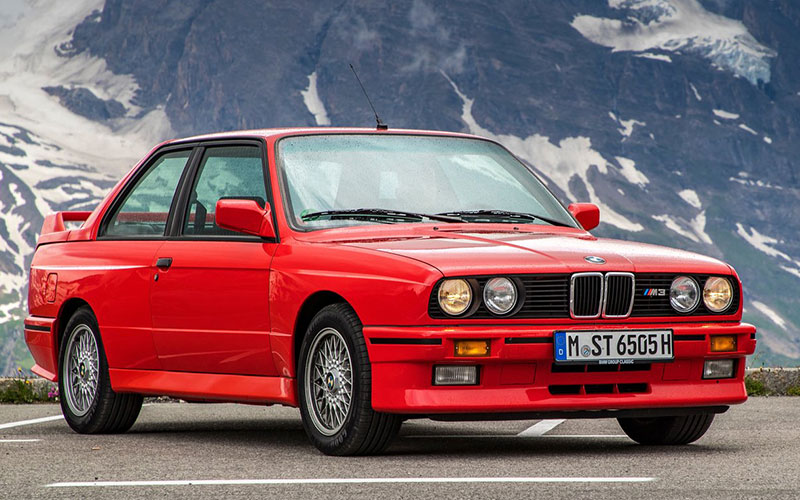
Both the Mercedes-Benz 190E 2.3-16V and the BMW E30 M3 exceeded expectations, in sales and in racing. And as great as they both have proven to be, in the rose-colored glasses of today’s car collectors, the competition isn’t all that close. The E30 M3’s popularity has steadily risen over the past 10-15 years, along with its prices. Today, the E30 M3 goes for about three times that of the equivalent 190E 2.3-16V, around $60,000 (though you can find ones in need of work for less or very well sorted ones for over $100,000).
The E30 M3 is one of those instances where popular opinion happens to perfectly overlap with the cognoscenti’s. Not only is it the best German touring racer of the 1980s, it is arguably the most stylish German car of the decade as well. So, while the laudable Mercedes-Benz 190E 2.3-16V gets a nod of the cap, the BMW E30 M3 gets sprayed with champagne and hoisted on our metaphorical shoulders.


